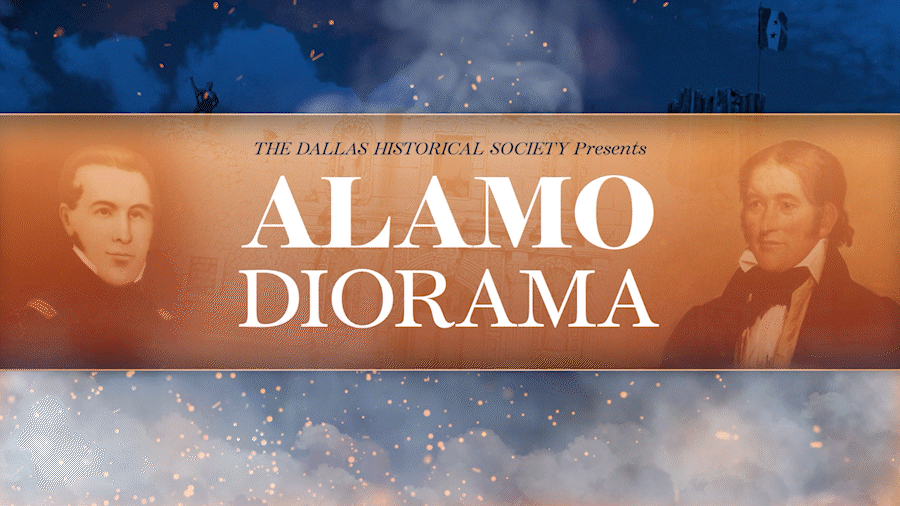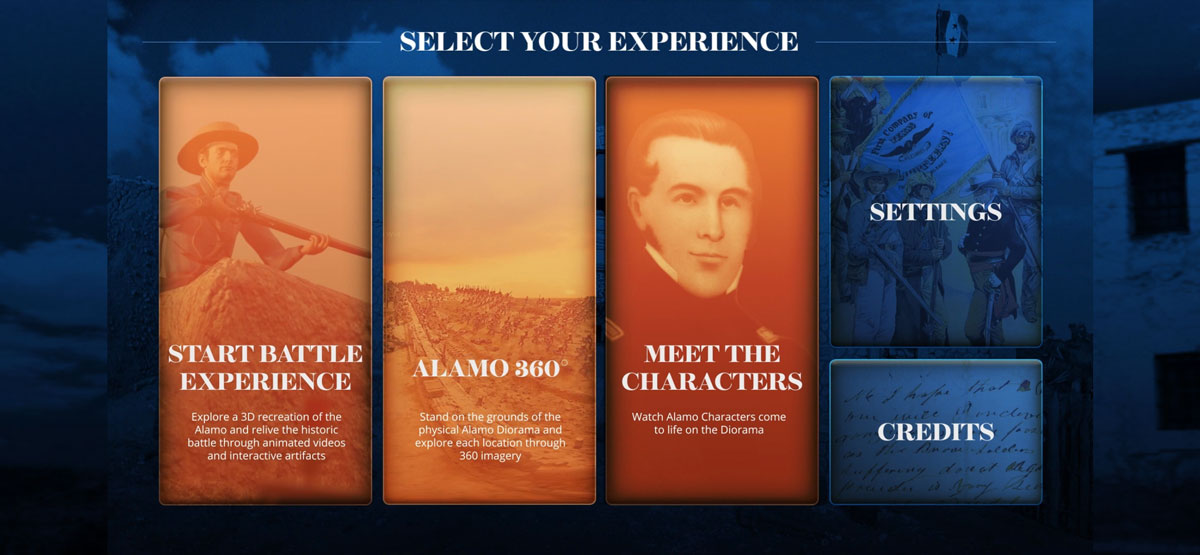Alamo Diorama Mixed Reality Mobile App
Experience the heroic stories of the Battle of the Alamo through mobile augmented reality
About The Dallas Historical Society
The Dallas Historical Society is a 501C-3 organization collecting, preserving, and exhibiting the heritage of Dallas and Texas since it was established in 1922. The Dallas Historical Society develops rich exhibits to educate and inspire future generations of the diverse history of Texas. Located in the famous Hall of State in Fair Park, the Dallas Historical Society houses over 3 million items in its archive and artifact collections. Each year, the Hall of State is visited by more than 160,000 people and serves more than 20,000 students through guided tours, educational programs, new exhibits, and workshops.
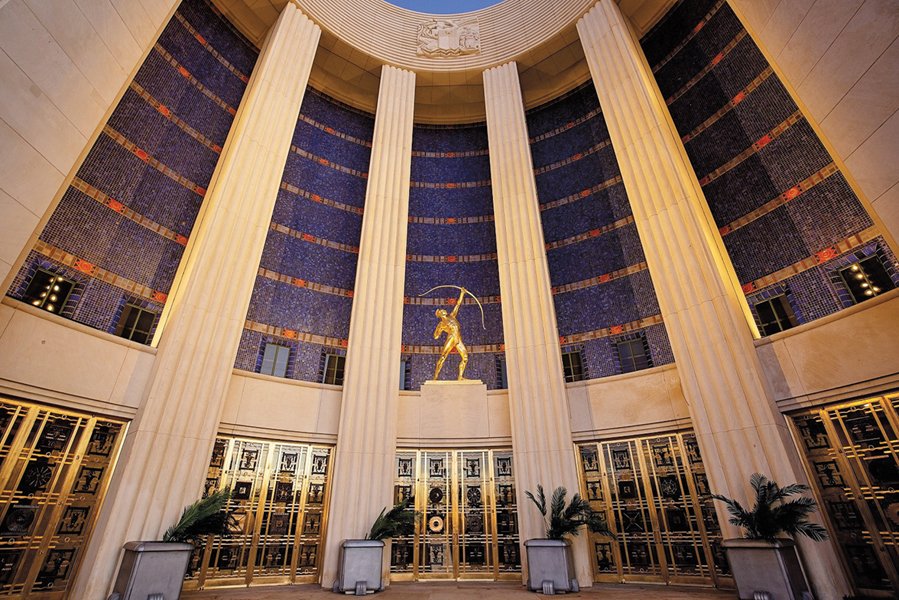
Project Summary
The Dallas Historical Society approached QuantumERA® to develop a companion mobile application to support the upcoming launch of their new exhibit: Texas Liberty Forever! Battle of the Alamo diorama.
The Battle of the Alamo diorama creation took over 20 years by Pennsylvania Artist Thomas Feely. The 24 x 14 ft. diorama is the largest depiction of its kind and serves as the centerpiece of the Texas Independence Exhibit at the Hall of State in Dallas, Texas.
Karl Chiao, Executive Director of the Dallas Historical Society, noted that while the diorama is impressive, it lacks any interactive elements that will appeal to the 20,000+ students who visit the Hall of State annually.
QuantumERA® partnered with the Dallas Historical Society to evaluate potential technology-driven solutions to deliver the interactive experience the organization desired.
The Challenge
QuantumERA® met with the staff at the Dallas Historical Society on numerous occasions to establish the organization’s goals for the exhibit and its companion mobile application.
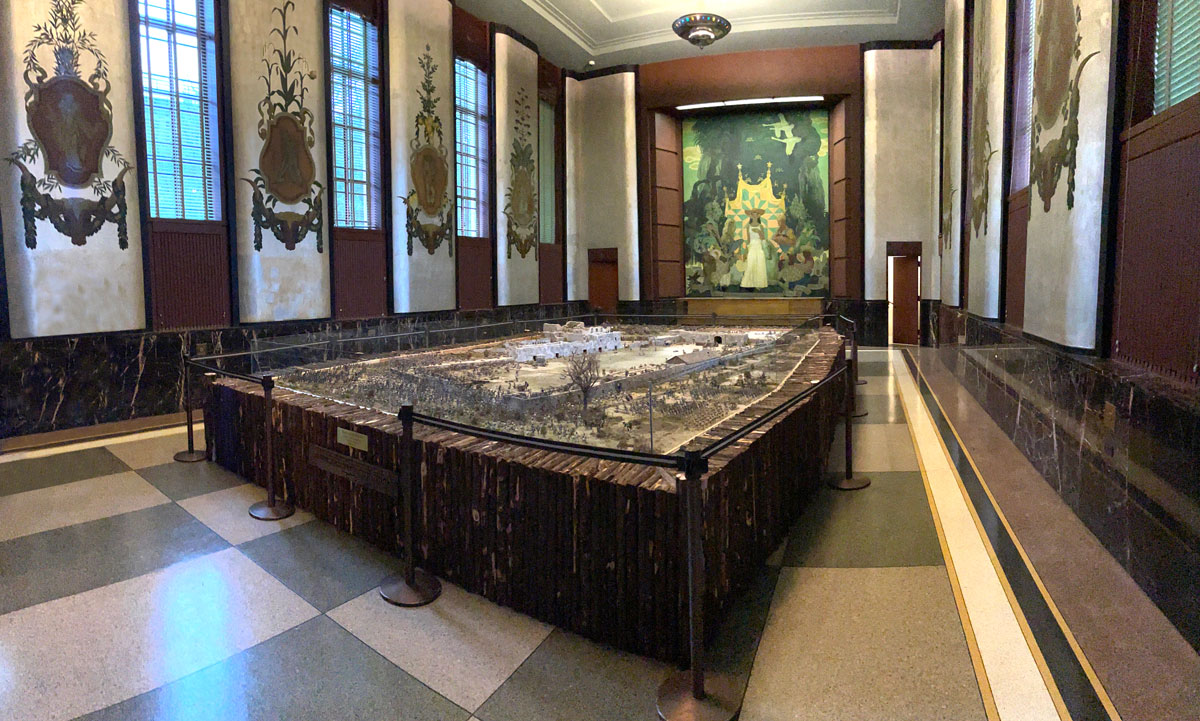
Exhibit Room Limitations
The Dallas Historical Society planned to exhibit the Alamo Diorama in its South Texas room. We initially suggested the creation of a multimedia installation surrounding the diorama to further enhance the space. The installation would have included projection mapping, lighting, and sound design to create a unique atmosphere that would complement the diorama and its narrative.
We quickly realized the exhibit room is not equipped for such an installation. The exhibit room has a tall ceiling and is adorned with a series of large windows on its right and left wall, the back wall displays a beautiful mural, and the structure is a registered Historical Landmark which does not allow for any modification to the building. These factors make it extremely difficult to retrofit the space with the proper equipment for an installation.
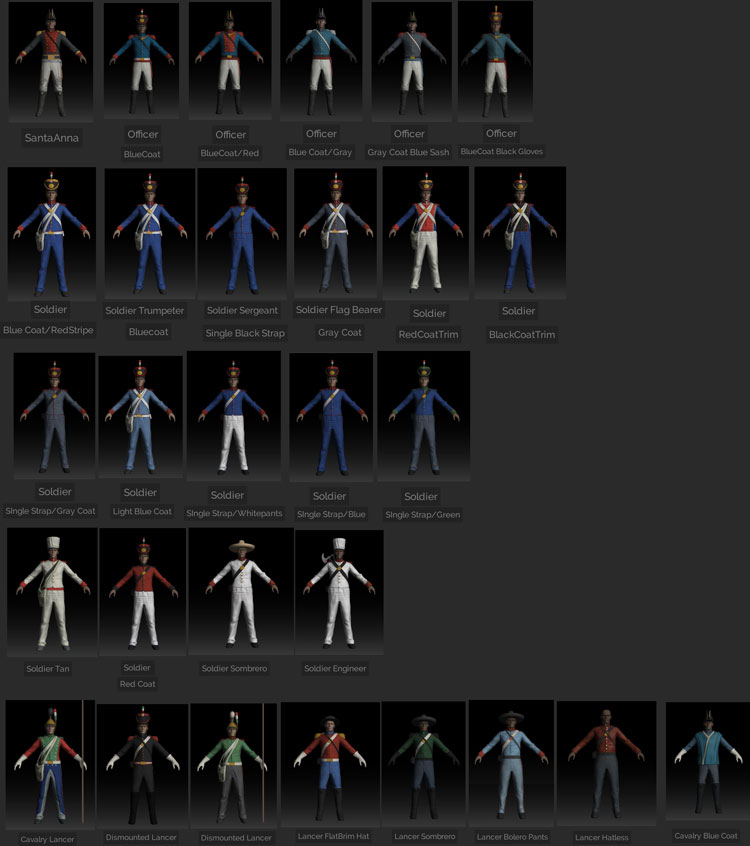
Bigger In Texas, Even Dioramas
From the start of pre-production, it became apparent that one of the biggest challenges was the sheer scale of the diorama itself. The 336 sq.ft. diorama occupies the majority of available space in the exhibit room which presents a few technical and user experience challenges.
The Alamo Diorama is displayed in the center of the exhibit room. Visitors are expected to enter the room and surround the diorama on all sides to see all of its details. The experience needs to be available regardless of where a visitor stands in the room. The experience also needs to be mindful of the limited standing space that is available to visitors.
In addition to limited space, the size of the diorama makes it difficult to rely on image targeting as we had in past projects. In augmented reality applications, image targeting uses a series of images as a trigger to detect and augment content seamlessly. Instead we built the application’s key features using area targeting which allows us to capture a 3D scan of the space to easily deliver content to stationary objects.
Accurately Representing The Battle
The main experience of the application is a retelling how the events of the Battle of the Alamo unfolded at several locations on the diorama. To maintain the augmented illusion of the experience, it is imperative that our 3D model of the 1836 Alamo Mission is not only historically accurate, but also emulates the physical diorama in the exhibit room. For example, the diorama depicts the Mexican and Texan armies in a large variety of clothing. Each soldier was outfitted differently depending on their rank, combat mission, and unit. The soldiers’ positions in the animation must exactly match the position of the corresponding soldier on the diorama. This makes the process of modeling and animating each soldier quite challenging from a technical, artistic, and historical accuracy perspective.
In addition to the Alamo itself, the mobile application covers specific artifacts and persons of interest. We wanted to find a fun way for visitors to interact with weapons and artifacts from the Dallas Historical Society’s collection. The use of Augmented Reality characters placed at near full scale on the diorama breathe life into key figures of the battle such as David Crockett, Jim Bowie, William Barret Travis, Santa Anna, a cannon and crew, and the African American woman, Sarah who died in the battle and was almost lost to history.

Process
The project’s pre-production phase is where QuantumERA® determines how to resolve the challenges that are presented to our team. A thorough collaborative discovery process guided by our team allows our client to fully explore the options and possibilities of how augmented reality can enhance and expand their exhibit.

Capturing The Conflict
The QuantumERA® team conducted many onsite visits to the Hall of State, for meetings with the DHS team and captured thousands of images of the space and the diorama. These are used as reference imagery for the Moontower VFX animation team led by Greg Olmelchuck to build a highly accurate 3D model of the buildings, soldiers, animals, props, and landscape. These references also help us understand the points of interests and how we can craft the voiceover narrative to examine each of these locations.
Using reference materials from multiple sources, our creative director works with historians and the animation team to create scripts, animatics, and finished animations while completing scripts for all the elements of the application.
Voice-over actors, sound effects and music beds are chosen by the creative team in collaboration with the DHS client.
In addition to the reference imagery, we capture 360 photographs of the diorama that are used in the final version of the application.
This visit also enables us to capture detailed scans of the room and the diorama to use for area targeting later in production.
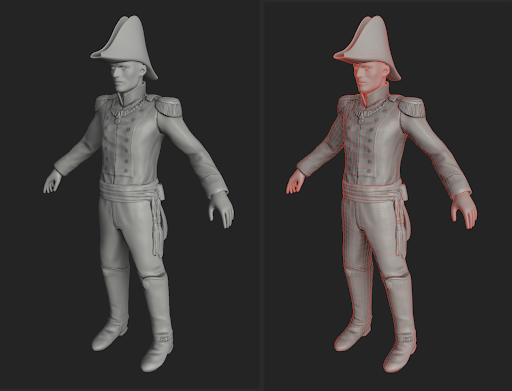
Animating David Crockett
It is important for us to showcase multiple aspects of this historical battle. In addition to telling the larger narrative, we include character moments with key figures of the battle.
Working with the Dallas Historical Society to accurately represent key figures such as Jim Bowie, David Crockett, Santa Anna, and William Travis. We modeled and animated each figure to include in our experience.
Finding The Artifacts
Our team collaborated with key staff members to decide which Dallas Historical Society artifacts would be best for the narrative. We decided to create 3D models for six artifacts that would help give additional context to the historical retelling.
Solution
Below are the final renditions of various key features of the mobile application.
The Battle of the Alamo Experience
The main feature of the mobile application is a fully realized 3D model of the Alamo Mission. Visitors use your device’s camera to scan the physical diorama to trigger the start of the experience. Visitors can explore 6 different locations, represented by maroon flags, throughout the Alamo to learn about key events that took place during the battle.
At each flag, the visitor can rotate their camera through simple touch gestures. By exploring the space, visitors will find interactive artifacts, learn about key figures, and watch fully animated battle sequences.
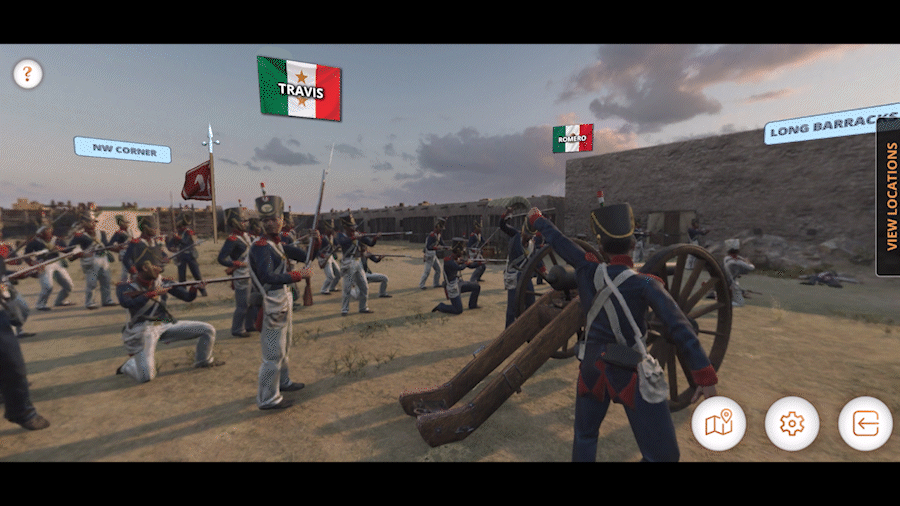
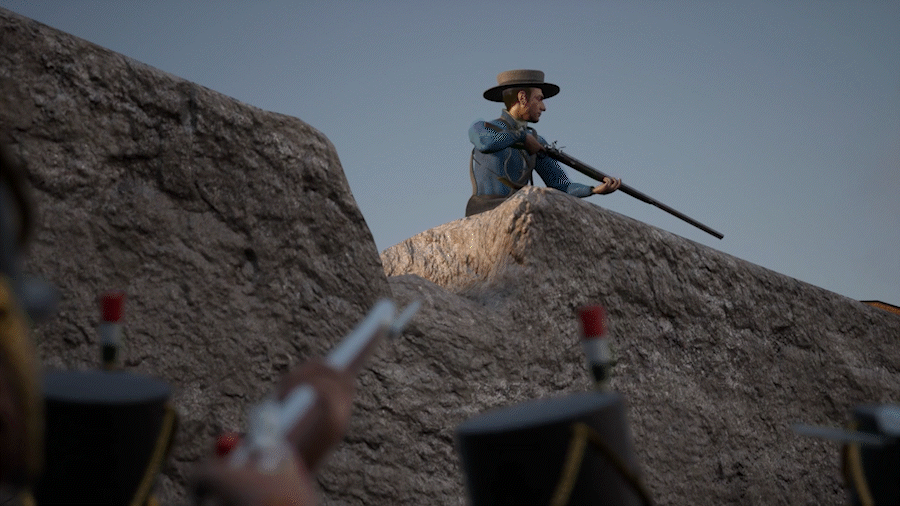
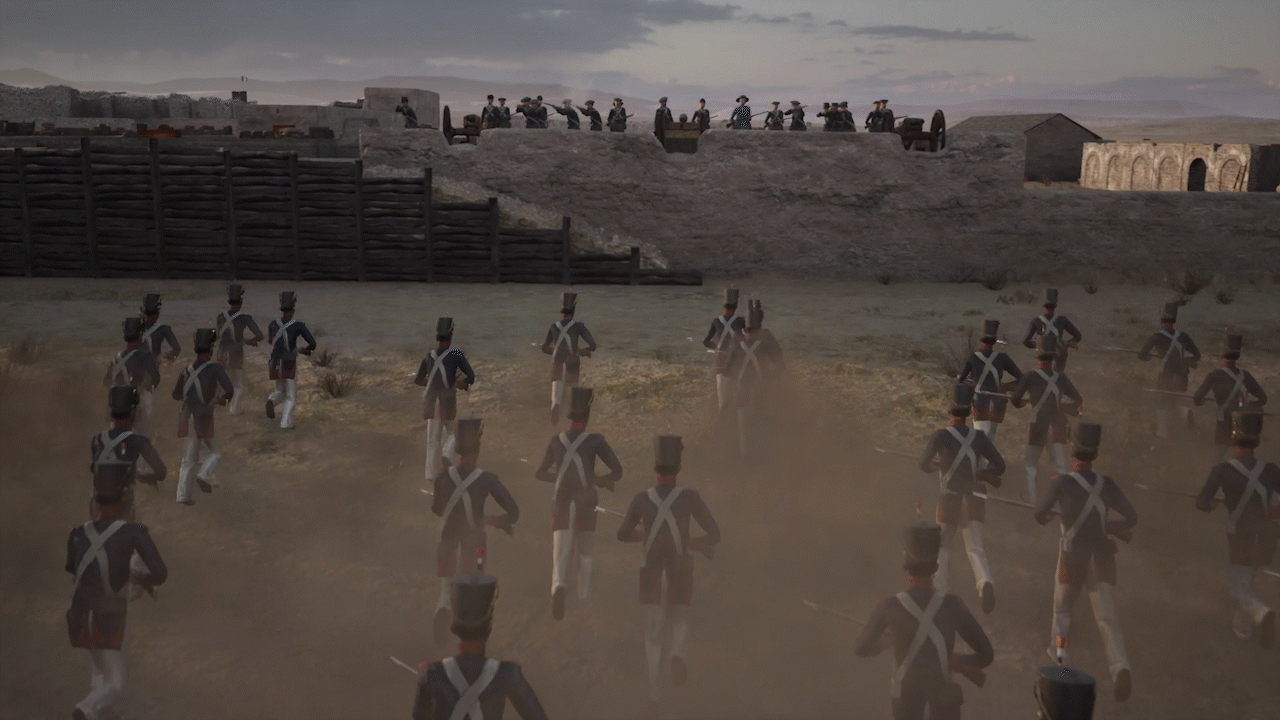
Alamo 360
The 360 photography captured in pre-production went through an editing process to deliver high quality 360 images of each location. A top view map of the Alamo displays several points of interest. Visitors can tap each icon to visit each location as if they were standing on the diorama itself.
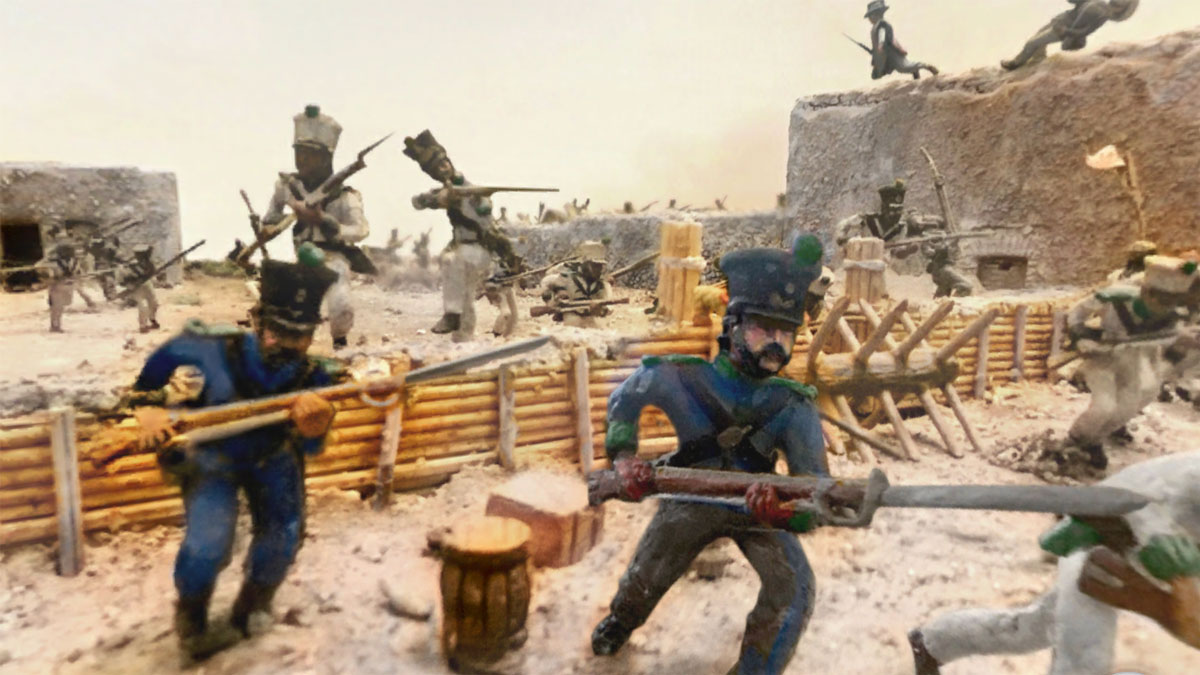
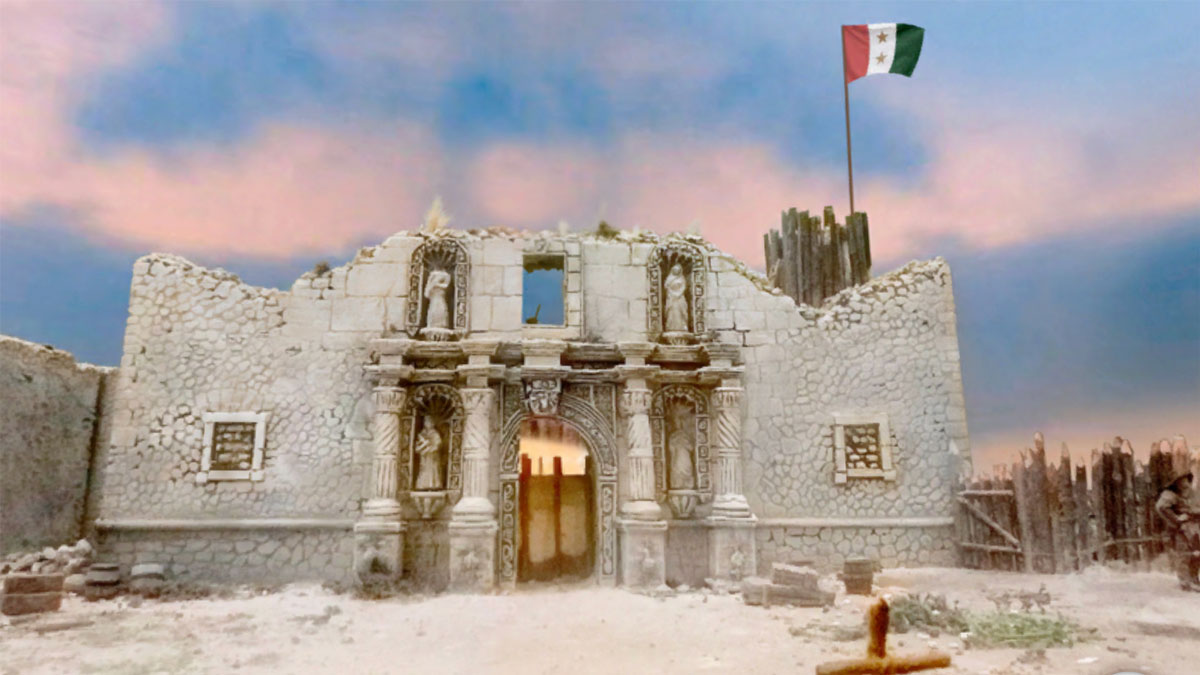
Meet The Characters
The mobile application features 3D animated models of 6 key figures in the conflict. The visitor can place each figure in their physical space and watch the figure come to life.
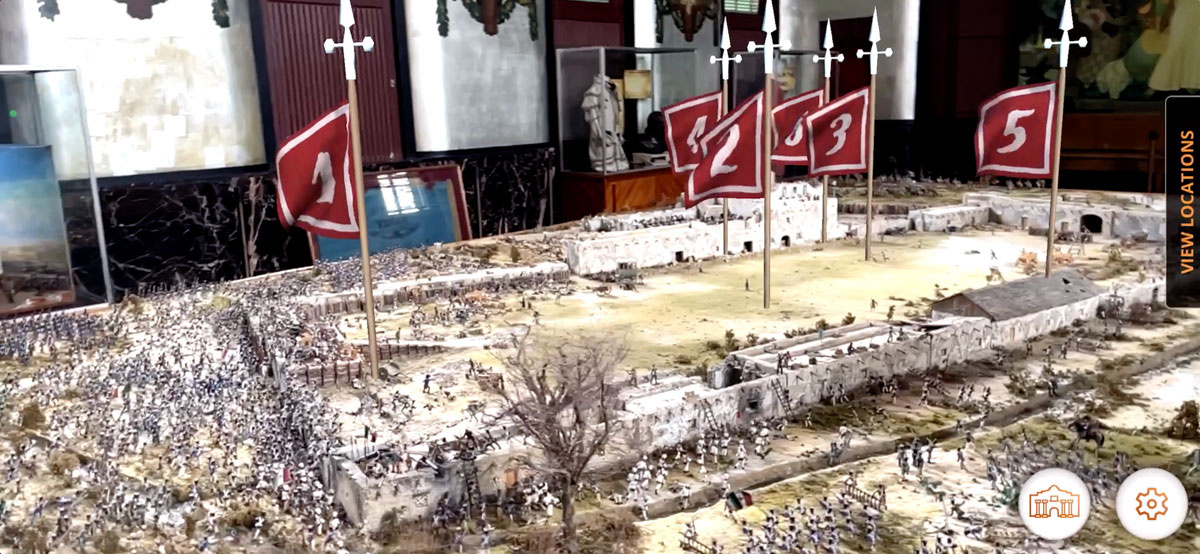
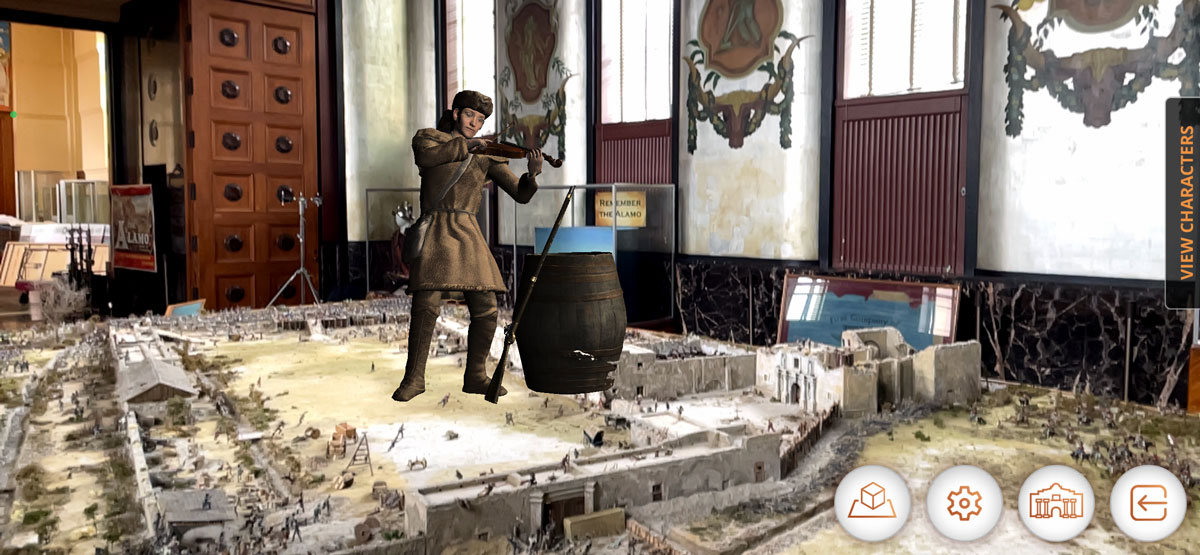
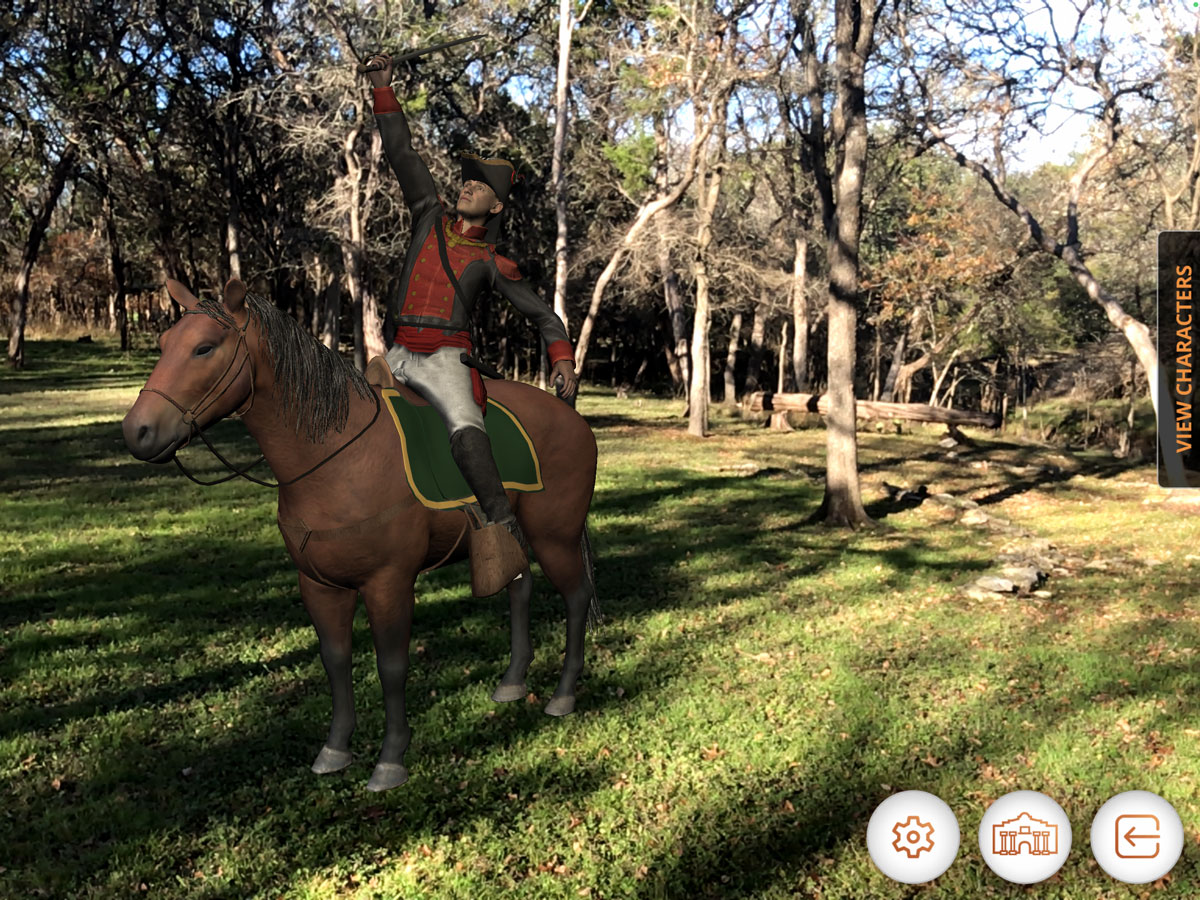
Working With QuantumERA
QuantumERA® develops immersive business solutions utilizing technology like augmented reality, virtual reality, and mobile applications. Our creative and development team collaborate with organizations across industries to provide valuable insights and build tech-driven solutions that move them forward. Contact us to learn more about our immersive business solutions and technology capabilities.
Organization: Dallas Historical Society
Client: Karl Chiao
Technology: Mixed Reality
Platform: iOS / Android
Project Date: May 2021

